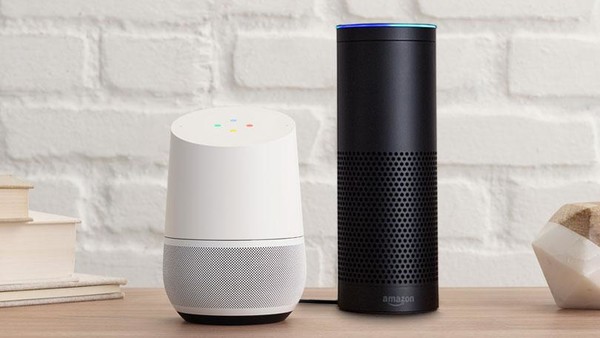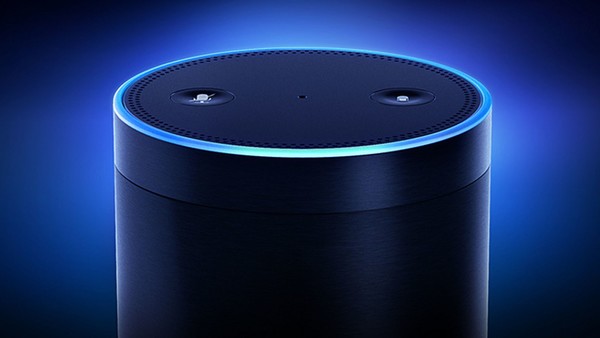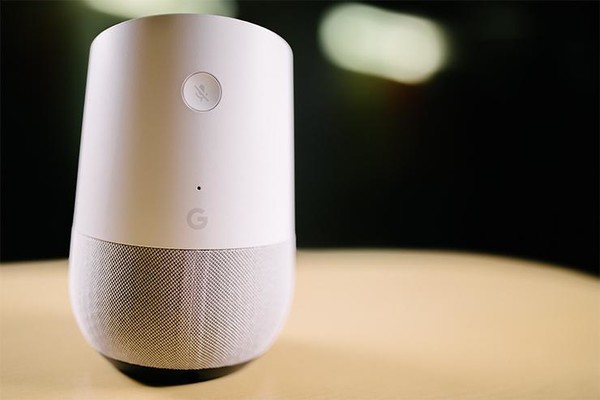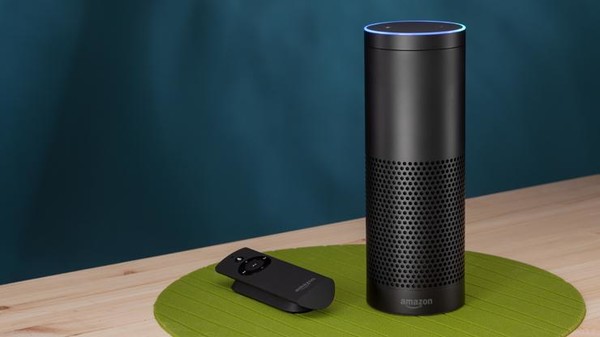Recently, both Amazon Echo and Google Home have been substantially upgraded. This article will compare two products in terms of voice assistant, smart home hub and so on. Shortly after introducing the Echo Show with a touch screen, Amazon upgraded its old version of Echo, mainly adding voice calling and voice messaging. Google is not to be outdone, followed by a series of heavy-duty updates on its own home Google Home, including Bluetooth music, voice calls, and more in-depth integration with television and so on. Although Google Home has been released for more than a year, in fact, in the past, Amazon Echo is still the only choice for most people. So, after the update, Google Home will have the opportunity to stand up? In advance, the object of our comparison is limited to the standard version of Echo, not including Echo Dot and mobile version of Amazon Tap. Design The standard version of Amazon Echo is a small cylinder, 23.5cm high, 8.3cm in diameter, weighs about 1kg, and has a black and white color scheme. It is the highest in its class and therefore the most visible. The black holes in the speaker cover the lower half of the Echo body. The only two buttons are located in the upper part of the fuselage. One is a microphone switch and the other is a multi-function key; there is a sound indicator ring at the top of the fuselage. Voice assistant Alexa is talking and it will light up. In contrast, Google Home will have to be "dwarfed" with a height of less than 15cm, a diameter of about 9.6cm and a weight of about 476g. The fuselage body is only a white color. However, by changing the base, you can try different colors and materials, including carbon black, bronze, pure white, yellow, blue, violet and so on. The design of Google Home is inspired by candles and red wine glasses. The upper part is made of smooth plastic material. When listening to people, the body's LED light can emit 4 colors of light. It also has a touch interaction area where you can play music or pause, adjust the volume, or activate Google Assistant. The mute button is set on the back of the camera. Both of these designs didn’t make a big difference, but thanks to the smaller form factor and richer color palette, Google Home looked like a less flat choice. Sound performance Google Home sounds more full and immersive than Amazon Echo. However, the volume is a bit smaller. At the maximum volume, only one step away, the volume decays by 3-4 dB. Prior to the latest update, Google Home could not be used as a normal Bluetooth speaker. However, after this issue was resolved, he was already at the same starting line with Amazon Echo. It also means that you can play any audio and e-books on your phone via Google Bluetooth, just like Echo does. Both devices support iHeartRadio, Pandora, and Spotify music, and of course, their own Amazon Music and Google Play Music. voice control All smart speaker controls can be completed by voice, including controlling music playback, searching, and controlling smart home devices. The wake-up method of Amazon Echo is to say "Hey, Alexa" to it. If you suspect that two words are too much trouble, you can just say "Alexa" or "Amazon". Google Home wakes up similarly, but the password is changed to "OK, Google" or "Hey Google." In a home environment within 50 steps, both speakers can hear your instructions and you can hear them. Children always have the genes of their parents. On smart speakers, this means that Google Home can help you search for more information on the Internet. Alexa is better at handling shopping-related issues. For some simple instructions, such as spelling words, countdowns, broadcast news, etc., there is no difference between the two. However, Google Assistant looks smarter. For example, if you ask it: “Who is the lead singer in Takeren (record company)?†After you get the answer, you can continue to ask other information about this person, such as “Is that person playing any movie? ?". Smart Home Control The kind of smart hardware that Google Home can control is already a lot more than it was a year ago, but there is still some distance from Amazon Echo. At present, Google Home supports brands such as: August, Belkin Wemo, Frigidaire, Honeywell, Insignia, Lifx, Logitech Harmony, Next, Philips, Rachio, Samsung, TP-Link, Wink (domestic users should look aggressive), and Chromecast (Google TV Stick) Any device connected. In addition to Chromecast, these brands Echo also fully support, in addition, there are more Blink, Carrier, DigitalStrom, Haiku, Leviton, Lowe's Iris, Lutron, Netatmo, (continues aggressive), and a series of other devices. Google Home has an advantage in the overall television resources. By working with Chromecast, Google has supported video on demand on many websites, including HBO Now and Hulu (foreign video service providers), which means that you can use voice-on-demand video programs on non-intelligent devices. In Amazon Echo, you want to achieve the same functionality, you have to buy a $ 89.99 expansion device. Other functions On the Internet, both Echo and Google Home access the Internet via WiFi. Google Home’s signal was weaker during the test. In places where Google Home cannot receive signals, Echo can also use it normally. Alexa supports more third-party applications than Google Assistant (about 11,000 for the former and about 200 for the latter). Interestingly, Alexa's support for Google's services is even better than Google's own Google Assistant. For example, Alexa can add items to Google Calendar or read calendars from Gmail, which Google Home cannot do. Now on Echo, you can use Alexa and other users who use the device to talk for free. Google Assistant goes one step further. You don’t need a mobile phone. You can just tap the phone to someone else’s phone, or you can save the frequently used number in your Google account. In the face of complex scenes, Google handled better. Google Home can talk to 6 people at the same time and automatically switch to the corresponding user’s account and mode based on their voice. On Echo, you have to actively say to it: "Switch accounts to xxx". Google can also distinguish the sound in different rooms. Echo cannot. They are still improving Google Home sells for $129, which is cheaper than Amazon Echo for $179.99, but the castrated version of Echo Dot and mobile version of Amazon Tap cost $50 and $100, respectively. When we purchased a smart speaker with voice assistant, Amazon Echo, especially smaller and cheaper Amazon Dot, was still better than Google Home's choice, but the gap between them was getting smaller and smaller. At the same time, Google Home also has some of its own advantages, such as smarter voice interactions, better sound quality, and more. Although these are currently unable to shake up the ever-expanding hardware and application ecosystem of Amazon Echo, in this emerging field, even a few months later it is difficult to predict. Pad Mounted Transformer,Wind Power Substation,Step-Up Wind Power Sustation,Step Up Transformer Hangzhou Qiantang River Electric Group Co., Ltd.(QRE) , https://www.qretransformer.com




